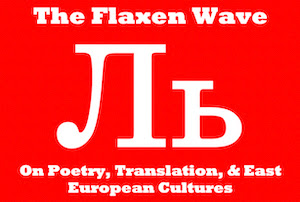A sculpture dedicated to Osip and Nadezhda Mandelstam, entitled “Monument to Love,” was unveiled yesterday in Saint Petersburg during the city’s Mandelstam Days celebration. The Dutch sculptor who designed the new piece, Hanneke de Munck, has posted video footage of it on his website, along with the Russian text of Mandelstam’s poem “Oh how I wish…” (“О как же я хочу...”). He told Radio Svoboda that the sculpture is “far more life-affirming than they expected in Saint Petersburg,” since they had in mind something that “would have expressed all the tragedy of Osip and Nadezhda’s life.”
RIA Novosti, quoting the press service of Saint Petersburg State University, describes the new sculpture, which stands in the courtyard of the university's Twelve Colleges Building, as a “tribute of respect to the great poet and his wife Nadezhda for their devotion to independent creativity and to each other. Many poems by Osip Mandelstam reached us only thanks to his spouse.” As is widely known, Nadezhda Mandelstam memorized countless poems by her husband in order that his work would survive when the manuscripts were stolen or destroyed by the Soviet authorities.
Maria Golubkova writes in Rossiyskaya Gazeta that, in the new sculpture, “Nadezhda and Osip seem as though they are flying past; they have angel’s wings on their shoulders, and the poet holds manuscript sheets in his hands.” Golubkova wrote in an earlier article that Hanneke de Munck plans to place a second, similar sculpture at a Dutch university “in order to emphasize the strong cultural ties between Russia and Holland. Only then will the project be complete.”
In other Mandelstamian news, The New York Review of Books published an article this week by José Manuel Prieto about the Russian poet’s “Stalin Epigram.” (Non-subscribers like me can read the beginning of the piece here.) Prieto, who translated the epigram into Spanish in 1996, explains its significance: “The poem had cost Mandelstam his life; writing it was an act of incredible recklessness, bravery, or artistic integrity.” Perhaps because of the poem’s status in Mandelstam’s oeuvre, Prieto was never happy with the translation he produced, claiming that it “felt like a pallid copy of the original Russian, which is as beautiful and powerful as if it had been carved in stone.” He describes (accurately) Mandelstam’s poetry as “amazingly concentrated and not particularly discursive,” making it “virtually impossible to translate its sonorities, or the richness of many images that don’t come through or resonate in the target language.” Indeed, the task of the translator is often impossible, but making the attempt is nonetheless worthwhile.

Dear Jamie:
ReplyDeleteThanks so much for coming onto my blog and introducing yourself. What an impressive site you have! Great to see another Russian lit fan, and I was very pleased to learn about a Library offering some human services in Russia. You are married to a Russian, I'm guessing! Library Blat' -- can't beat it. I'm also so interested to know how many students you have and what they see as the future for Russian studies? Great to know you are out there in cyber space!
Unfortunately, the future of Russian studies is far from the minds of my students: I teach in an English Department. I do get to teach an occasional course on Russian literature in translation, but even then the students are just dabbling in Russian studies -- it's more of an overview than anything else.
ReplyDelete